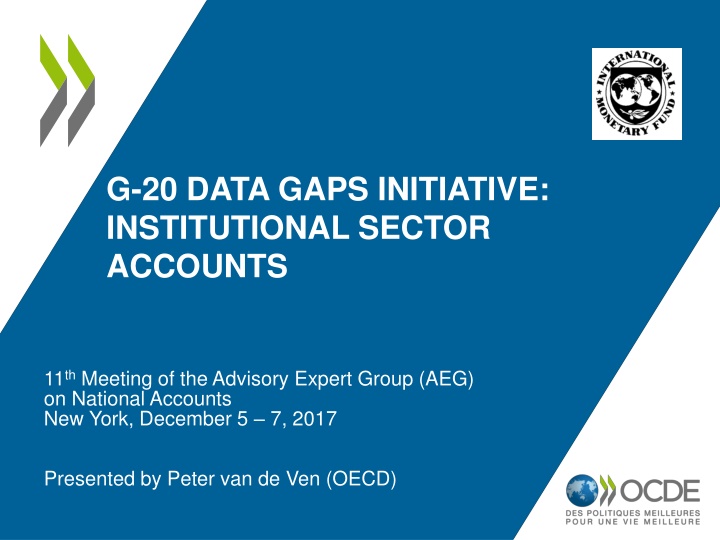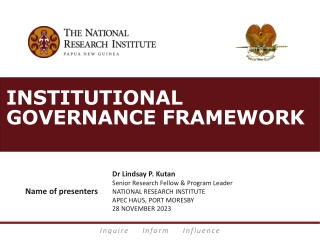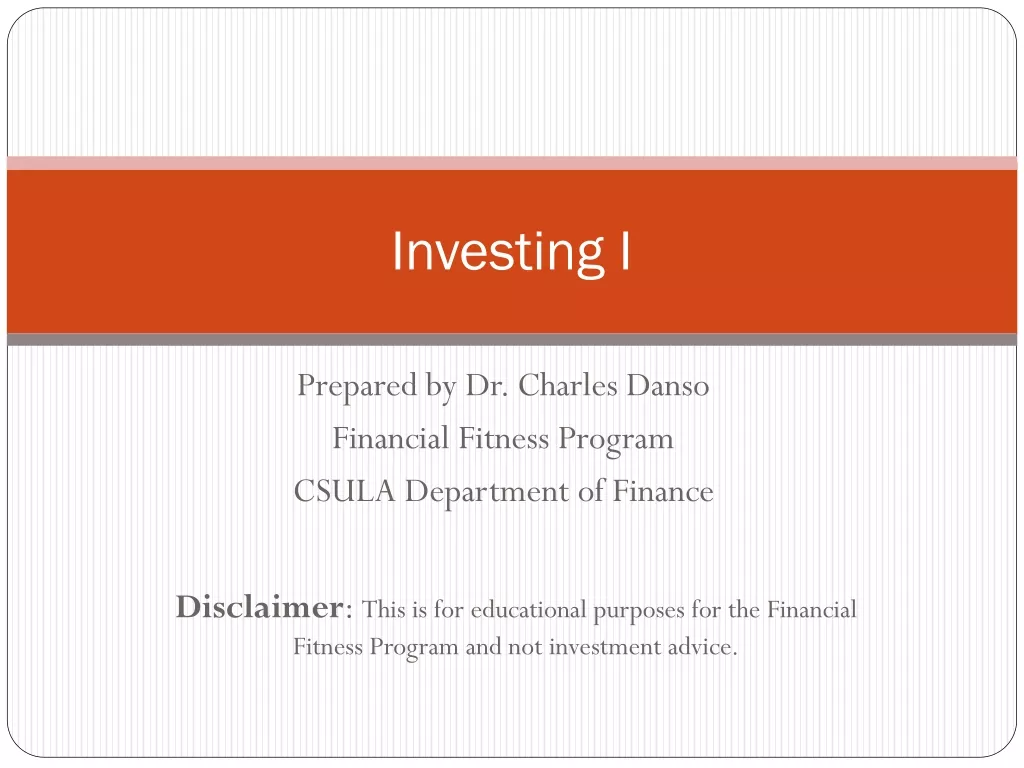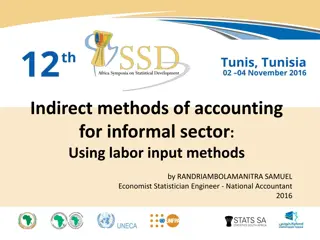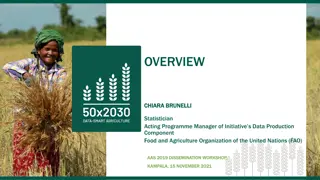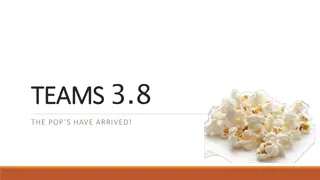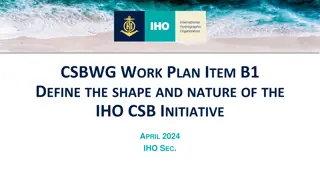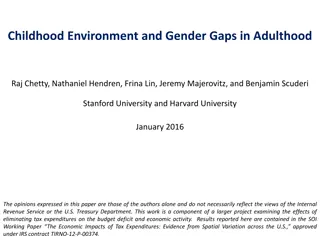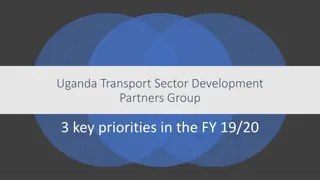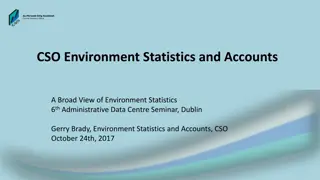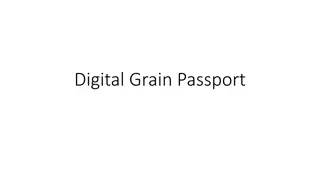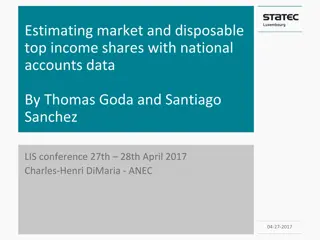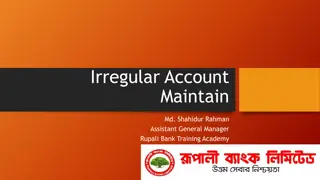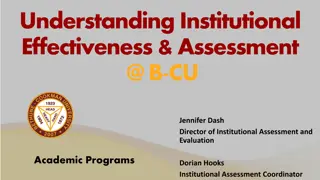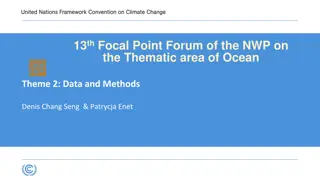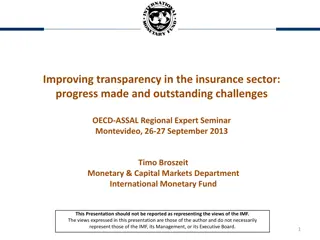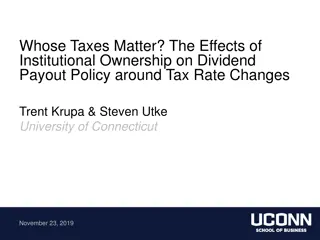G-20 Data Gaps Initiative in Institutional Sector Accounts
The G-20 Data Gaps Initiative focuses on institutional sector accounts, particularly financial accounts and balance sheets. This initiative, presented by Peter van de Ven from the OECD, aims to enhance the availability of relevant data for decision-making through the creation of templates and advanced data collection methods. Key areas of discussion include shadow banking, from-whom-to-whom tables, and the importance of timely and accurate data. The process involves a series of proposals and workshops to refine and endorse the final recommendations by 2018.
Download Presentation

Please find below an Image/Link to download the presentation.
The content on the website is provided AS IS for your information and personal use only. It may not be sold, licensed, or shared on other websites without obtaining consent from the author.If you encounter any issues during the download, it is possible that the publisher has removed the file from their server.
You are allowed to download the files provided on this website for personal or commercial use, subject to the condition that they are used lawfully. All files are the property of their respective owners.
The content on the website is provided AS IS for your information and personal use only. It may not be sold, licensed, or shared on other websites without obtaining consent from the author.
E N D
Presentation Transcript
G-20 DATA GAPS INITIATIVE: INSTITUTIONAL SECTOR ACCOUNTS 11thMeeting of the Advisory Expert Group (AEG) on National Accounts New York, December 5 7, 2017 Presented by Peter van de Ven (OECD)
Introduction G-20 DGI: Focus on institutional sector accounts, in particular financial accounts and balance sheets (Rec. II.8) Has become kind of umbrella/overarching recommendation Created massive momentum for improving the (future) availability of relevant data Important point of discussion: templates General template: traditional set of standard tables containing target requirements More advanced ambitions: Shadow banking From-whom-to-whom tables 2
Process IAG Working Group on Institutional Sector Accounts: first proposals G-20 Thematic Workshop (Paris, April 10 12, 2017) Detailed survey on feasibility by 2021 Revised proposals with some issues for further consideration: distributed on November 16, with feedback by December 29 Final proposal to be endorsed at G-20 Thematic Workshop (Paris, February 14 16, 2018) Note: Also discussed at the Joint Meeting of the OECD Working Parties on Financial Statistics and National Accounts, and put forward for consultation afterwards
General templates Target requirements versus encouraged items Sector breakdown: Main sectors as targets, with additional details as encouraged items Transaction/position breakdown: main items (2-digit level) Frequency: quarterly and annual, except for stocks of non- financial assets Time series: no specific requirements, as long as possible, with a minimum of four quarters Timeliness: 4 months for quarterly data and 9 months for annual data are to be considered as encouraged timeliness goals Data request relates first and foremost to non-seasonally adjusted data
General templates Consultation results: Financial accounts and balance sheets and current and capital accounts High data availability for the target requirements , both quarterly and annual frequencies Medium to low data availability for the encouraged requirements , both quarterly and annual frequencies S11 and S12 breakdowns into foreign controlled and domestically controlled usually not (yet) available in most of the respondent countries
General templates Consultation results (cont.) Financial accounts and balance sheets, both quarterly and annual frequencies Consolidated data: high availability (for most of the sectors) in most of the respondent countries Other changes in the volume of assets and revaluations account: data available in about half of the respondent countries Further breakdown of S12 into central bank (S121), other deposit-taking corporations (S122) and money-market funds (S123): high data availability
General templates Consultation results (cont.) Current and capital accounts: Quarterly data at current prices, seasonally adjusted: medium availability, but high for some series Quarterly data adjusted for price changes, both seasonally adjusted and non-seasonally adjusted: low availability, but medium for some series
General templates Consultation results (final) New proposal for the template for stocks of non-financial assets, with a less detailed sector breakdown (annual frequency only): High data availability for the target requirements in most of the respondent countries Sectors: S1, S11, S12, S13 and S14+S15 Assets: fixed assets (and details); inventories; land (and details). Low data availability for the encouraged requirements in most of the respondent countries Sectors: S128+S129, split of S14 and S15 Assets: produced non-financial assets; valuables; non-produced non-financial assets; natural resources; mineral and energy reserves; contracts, leases and licenses; goodwill and marketing assets.
Templates for shadow banking Main focus: additional breakdowns of financial corporations (with some more details for financial instruments) for (financial) balance sheets, annual and quarterly First tier versus second tier Many economies find it quite problematic to provide the requested details, especially at the 3-digit level Important to look at possible synergies with the FSB work on shadow banking, both exercises can mutually reinforce each other
Templates for from-whom-to- whom tables Providing information on interconnectedness between sectors/countries considered very important to detect certain financial risks and potential contagion effects Several countries noted that compiling FWTW-information is an intrinsic part of compiling financial accounts and balance sheets Quite a lot of details were already compiled at the national level, however not everything may be disseminated, due to quality considerations Proposed templates: Quarterly and annual frequencies (both flows and stocks) Three levels of detail, depending on the financial instrument
Templates for from-whom-to- whom tables Sector level 1: high to medium in slightly more than half of respondent countries and low to nil for (almost) the other half, for the required instruments Sector level 2: high to medium in most of respondent countries (and low for the remaining ones), for the required instruments Sector level 3: high to medium in half of the respondent countries and low to nil for the other half, for the required instruments
Revised proposals General templates (non-financial accounts, and financial accounts and balance sheets): Keep target requirements as proposed Only keep encouraged items for which data availability is medium to high, except breakdown of corporations into foreign- controlled, public, other private Consolidated data for financial balance sheets: general government as target and other sectors as encouraged items Breakdown of other flows as encouraged items Seasonally adjusted series and real series as encouraged items Two points for consideration: Distinction between S14 and S15 for annual financial accounts and balance sheets as target requirements or as encouraged items Breakdown of S12 for non-financial accounts as encouraged items or remove it from template
Revised proposals General templates (non-financial assets): Lots of discussion Revised proposal: Fixed assets (including details), inventories, land, land underlying buildings and structures, and land underlying dwellings for sectors S11, S12, S13 and S14/15 as target requirements Remove further breakdown of S12 To be considered: Have valuables and non-produced assets (except the above land categories) as encouraged items, or simply remove them
Revised proposals Templates for shadow banking: Although providing details is sometimes problematic, templates are not substantially changed However, breakdown of S127 and S129 moved to second tier; also some breakdown of financial instruments have been moved to second tier, or removed Templates for from-whom-to-whom tables: Proposed to consistently ask from-whom-to-whom data at level 2 (main sectors), but for further consideration, to have some instruments (previously requested at level 1) considered as second tier
Thank you for your attention! 15
